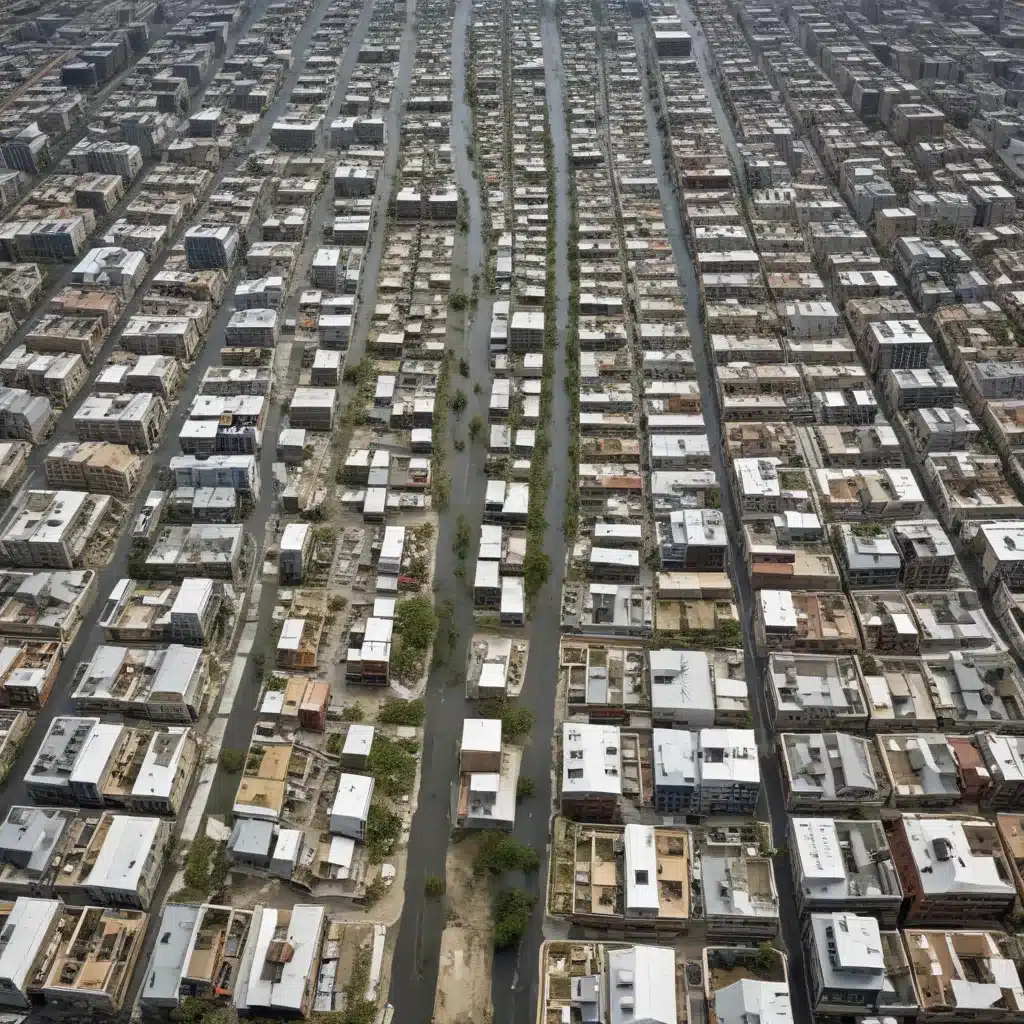
As a tree care specialist with TriCounty Tree Care, I’ve witnessed firsthand the devastation that natural disasters can wreak upon our urban landscapes. From the floodwaters that submerge vital infrastructure to the tremors that shake our foundations, the resilience of our cities is constantly tested. Yet, through strategic planning and ecological innovation, we can safeguard our communities and empower them to thrive, even in the face of calamity.
Disaster Risk Mitigation
At the core of urban landscape security lies resilient infrastructure design. By integrating disaster-resistant features into our buildings, roads, and utilities, we can minimize the impact of natural hazards. For example, elevated foundations, reinforced structural frameworks, and flood-proof materials can help structures withstand the forces of floodwaters and earthquakes. Likewise, underground power lines and redundant communication networks ensure that essential services remain operational when disaster strikes.
Equally vital is disaster-responsive urban planning. Thoughtful zoning, strategic green infrastructure, and proactive hazard mitigation strategies can fortify our cities against the ravages of nature. Designating floodplains and seismic zones as protected areas, for instance, reduces the exposure of vulnerable populations. Integrating permeable surfaces, bioswales, and urban forests into the landscape helps manage stormwater runoff and mitigate the urban heat island effect.
Emergency Preparedness
In the face of an impending disaster, early warning systems play a crucial role in safeguarding our communities. Leveraging advanced meteorological monitoring, seismic detection, and flood prediction technologies, these systems can provide timely alerts, enabling residents to take appropriate action. Coupling these systems with coordinated evacuation strategies further enhances our ability to protect lives and property.
Effective community evacuation planning requires close collaboration between local authorities, emergency services, and the public. By designating escape routes, establishing transportation hubs, and educating residents on emergency procedures, we can ensure a smoother, more coordinated response when disaster strikes. Regular disaster drills and public awareness campaigns help reinforce these critical measures, empowering citizens to take an active role in their own safety.
Natural Disaster Types
Floods and Flooding
Flooding remains one of the most pervasive and destructive natural hazards facing our urban landscapes. Effective floodplain management is essential, involving the identification of high-risk areas, the implementation of zoning restrictions, and the promotion of resilient construction practices. Complementary stormwater management strategies, such as detention basins, permeable pavement, and green roofs, help mitigate the impact of heavy rainfall and reduce the risk of urban flooding.
Earthquakes and Seismic Hazards
In regions prone to seismic activity, seismic-resistant building codes and the hardening of critical infrastructure are paramount. Rigorous engineering standards, including reinforced foundations, shear walls, and ductile construction materials, help ensure that our built environment can withstand the tremors of an earthquake. Proactive hazard assessment and the strategic placement of emergency response facilities further enhance our ability to respond effectively in the aftermath of a seismic event.
Sustainable Urban Development
Green Infrastructure Solutions
As we strive to create more livable, environmentally-conscious cities, green infrastructure solutions play a crucial role. By integrating stormwater management systems, such as bioswales, rain gardens, and constructed wetlands, we can mitigate the risk of urban flooding while also enhancing the visual appeal and ecological value of our landscapes. Similarly, urban greening initiatives, including the strategic planting of drought-tolerant trees and the establishment of urban forests, help regulate temperatures, improve air quality, and support biodiversity.
Climate Change Adaptation
In the face of a changing climate, our urban landscapes must adapt to the evolving threats posed by natural disasters. Addressing the urban heat island effect through measures like reflective roofing, green spaces, and urban tree canopy expansion can help reduce the strain on energy systems and improve the overall comfort and resilience of our cities. Furthermore, the integration of renewable energy sources, such as solar panels and wind turbines, not only reduces our carbon footprint but also enhances the energy resilience of our communities.
Post-Disaster Recovery
Rebuilding Resilient Communities
When disaster strikes, the path to recovery is often long and arduous. However, by embracing disaster-responsive urban design, we can help communities rebuild in a manner that enhances their long-term resilience. This may involve the strategic relocation of vulnerable structures, the implementation of sustainable stormwater management systems, and the incorporation of green infrastructure that can withstand the impacts of future disasters.
Engaging the community throughout the recovery process is crucial. By fostering inclusive decision-making, leveraging local knowledge, and empowering residents to participate in the rebuilding effort, we can ensure that the revitalized urban landscape truly serves the needs and aspirations of the people who call it home.
Economic and Social Resilience
The impact of natural disasters extends far beyond the physical landscape, often wreaking havoc on the economic and social fabric of our communities. To bolster economic and social resilience, it is essential to provide small business recovery support, ensuring that local enterprises can rebound from the disruption. Equally vital is the provision of vulnerable population assistance, addressing the unique needs of the elderly, the disabled, and low-income residents who may face disproportionate challenges in the aftermath of a disaster.
By embracing a comprehensive, multifaceted approach to urban landscape security, we at TriCounty Tree Care are committed to empowering our communities to withstand the ravages of natural disasters. From disaster-resistant infrastructure to sustainable development strategies, our mission is to cultivate resilient, thriving urban landscapes that can weather any storm. To learn more about our services and how we can help safeguard your property, please visit TriCounty Tree Care.


